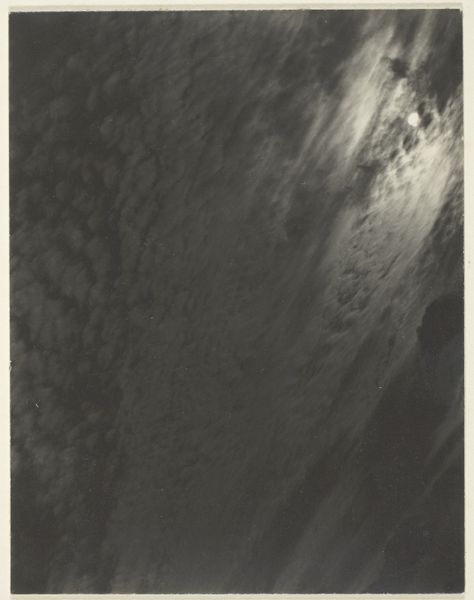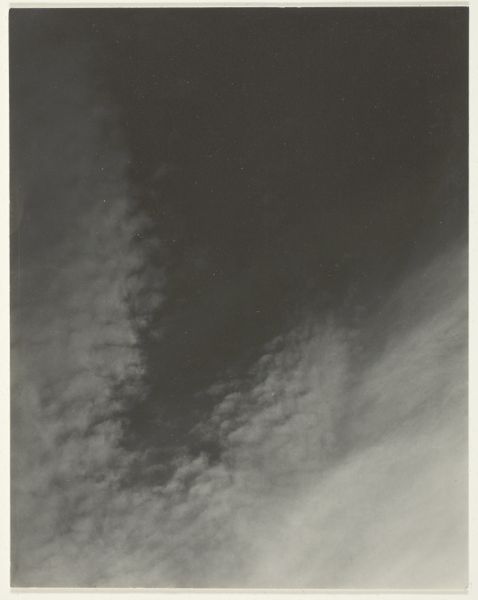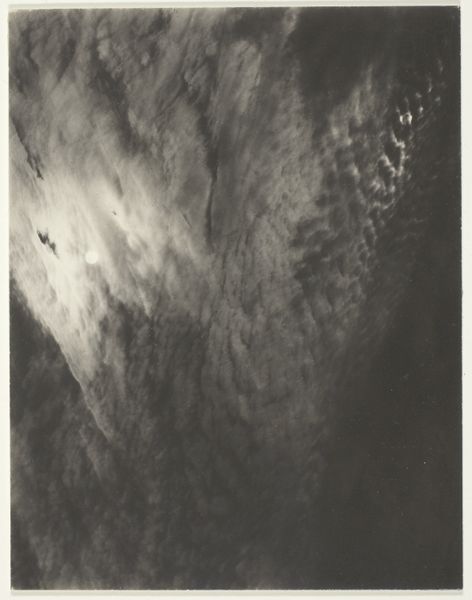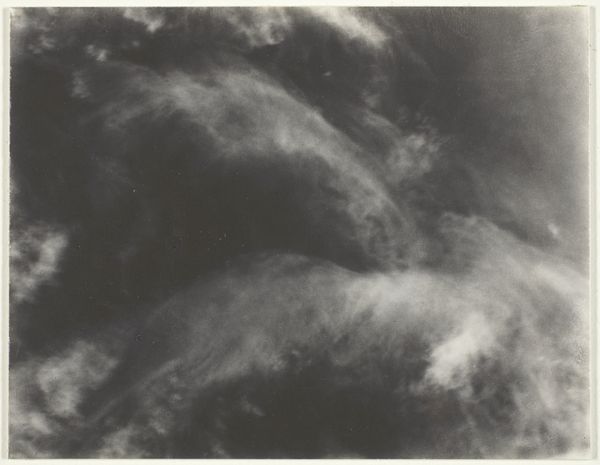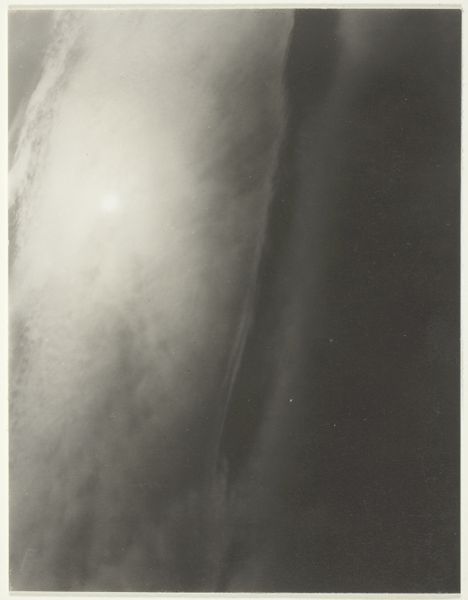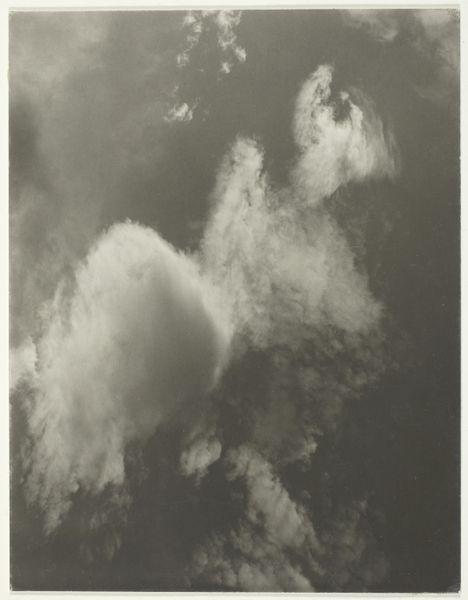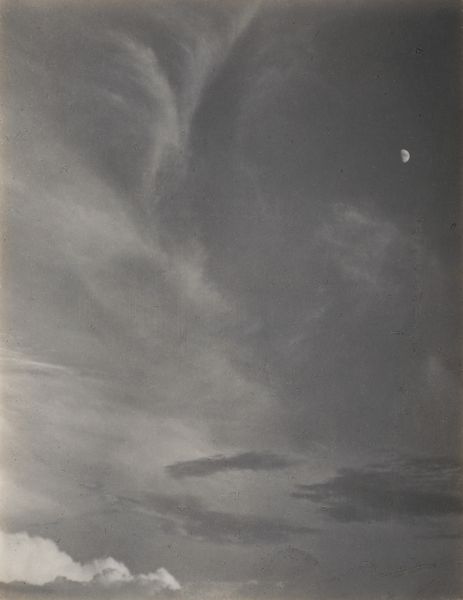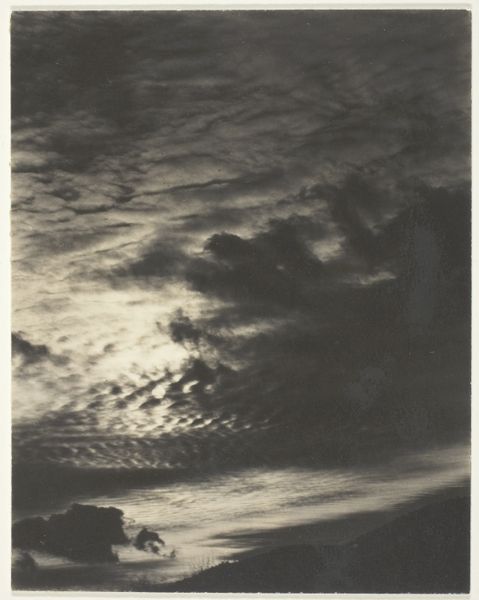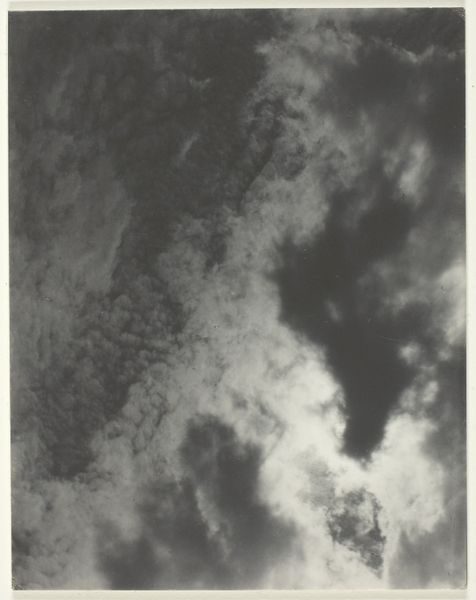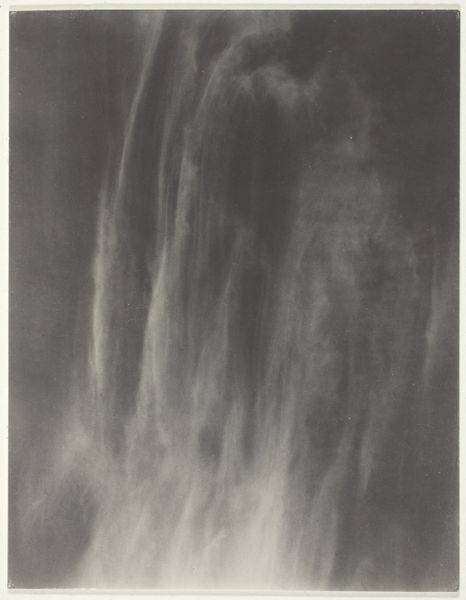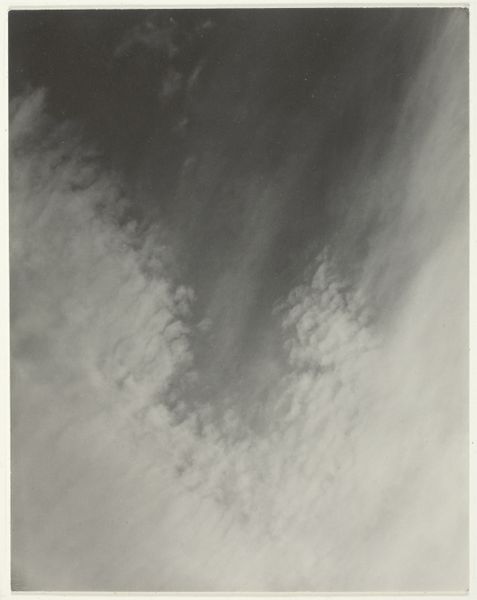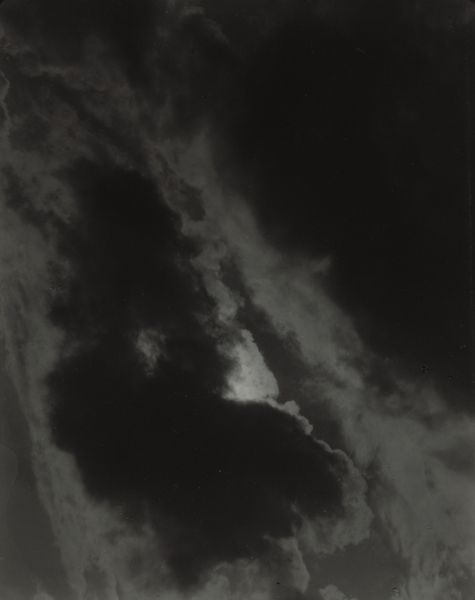
Dimensions: 11.9 × 9.3 cm (image/paper/first mount); 34.9 × 27.9 cm (second mount)
Copyright: Public Domain
Editor: So, this is Alfred Stieglitz's "Equivalent, from Set A (Third Set, Print 8)" made in 1929. It's a silver print on paper and… it looks like an abstract skyscape, maybe clouds? The contrasts are stark. What catches your eye in this work? Curator: I'm drawn to how Stieglitz uses such commonplace materials - silver, paper, and the very air around us - to craft something pushing at the boundaries of representation. We're looking at clouds, yes, but through Stieglitz's process, they transform into symbols, even equivalents, for inner states. Editor: Equivalents? Curator: Yes. Consider the social context: industrialization, mass production... Stieglitz is employing a highly reproducible medium - photography - but using it to capture something ephemeral, unique, and intensely personal. He challenges the notion of photography as purely documentary, imbuing it with the aura of the handmade, of artistic labor. Do you see that tension at play? Editor: I do. It’s like he’s trying to elevate photography to the status of painting, but by focusing on the photographic process itself. The materiality of the silver print seems almost sculptural in its gradations of light and shadow. Curator: Exactly! And notice how this series emerged during a period of significant personal and professional transition for Stieglitz. His relationship with Georgia O'Keeffe, his changing views on the art world... all filtered through the darkroom and imprinted onto these silver gelatin prints. He's literally materializing his internal landscape. Editor: That makes the print feel less like a picture of clouds and more like an object charged with meaning through the artist's process. I’ll never look at clouds the same way again. Curator: And hopefully you'll never look at any artwork the same way again without considering the materials, process, and social conditions that brought it into being!
Comments
No comments
Be the first to comment and join the conversation on the ultimate creative platform.
